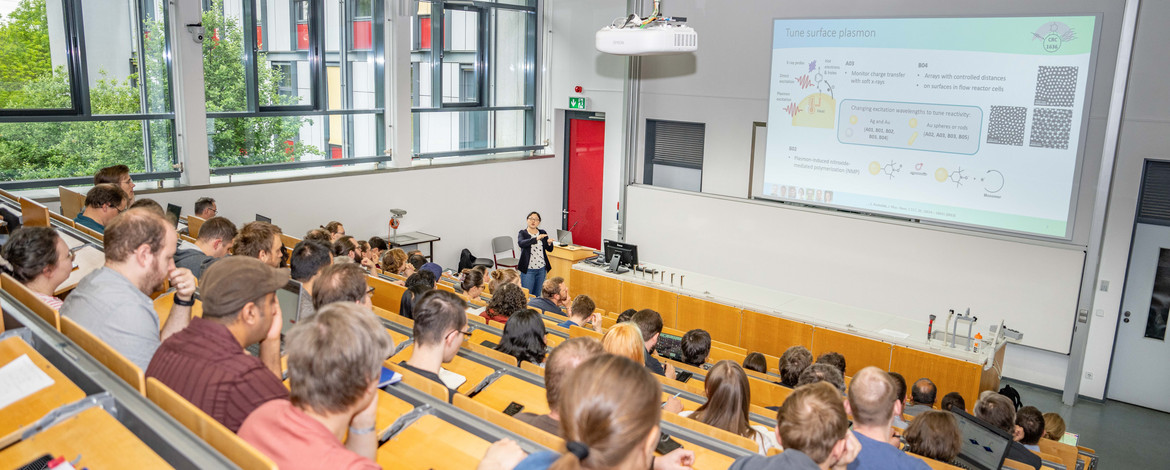Light-driven chemistry at nanoscale metals is an emerging, interdisciplinary research field. It is based on experimental and theoretical expertise ranging from nano-optics and condensed matter physics via physical chemistry and organic and inorganic chemistry.
The vision is not only to control chemical reactions via the catalytic properties of nanoscale metals, but also to enable them energetically by sunlight.
Chemical reactions that are amplified by coupling light to charge oscillations in the metal are known as "plasmonic chemistry", with controversial details such as the relevance of charge transfer and local heating in various reactions.
Our initiative aims at
- developing a comprehensive, fundamental microscopic understanding of the elementary processes that lead to light-driven chemical reactions at nanoscale metals.
- establishing new chemical protocols, to make useful chemical reactions more selective and efficient.
We emphasize ultrafast elementary steps and concentrate on physical processes at (photoexcited) nanoscale metals that form the basis for relevant chemical reactions such as organic coupling reactions and polymerizations as well as the production and functionalization of particles.




